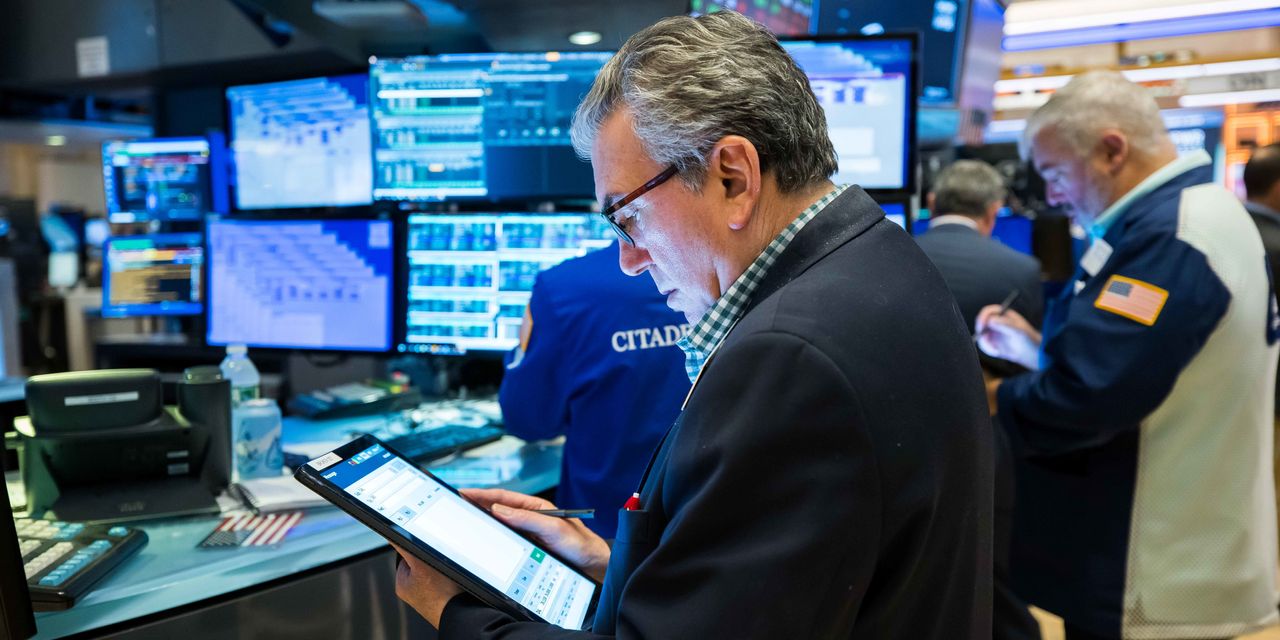Even though the stock market has climbed its way back into bull-market territory, don’t forget: Several factors could easily send it lower.
At just over 4300, the
S&P 500
is now about 20% above 3577, the lowest closing price seen in the recent bear market. That level, reached in early October, left stocks 25% below the record high hit in early 2022.
A gain of 20% from a low technically marks the start of a new bull market, which matches a recent surge of optimism. A Barron’s cover story this past weekend explains the gains and argues that more could follow.
In the first place, the Federal Reserve is almost finished raising interest rates as inflation and economic growth have both slowed down. Higher rates weigh on demand for goods and services, with unpleasant effects on corporate profits, so investors are now looking ahead to stabilizing economic growth and an earnings recovery next year. This spring’s mini-crisis in banking has been patched up, and Congress has raised the limit on government debt, avoiding a default that would have devastated the global economy.
But several negative forces haven’t gone away. They threaten to slam the brakes on the stock market.
The first factor has to do with tighter monetary policy. According to the Bear Traps Report, so-called broad liquidity—the combined size of the balance sheets of the Federal Reserve, the European Central Bank and the
Bank of Japan,
plus funds made available via the People’s Bank of China liquidity operations—is down to below $22 trillion from almost $25 trillion early last year.
The S&P 500 tends to rise when liquidity increases, falling when it declines. Given where liquidity is now, the S&P 500 should theoretically be at 3400, a roughly 20% drop from here, according to Bear Traps, a research hub that issues an investment newsletter. Less liquidity not only means less money is available for investment in stocks, it implies less cash is available for banks to lend and for consumers to spend. That hurts corporate profits.
It isn’t a surprise that the decline in liquidity could bring the stock market lower. Some of Wall Street’s biggest bears have recently voiced related concerns.
Morgan Stanley
strategist Mike Wilson has noted that tighter monetary works with a lag, which means the 10 rate increases the Fed has rolled out since March 2022 could have increasing negative effects in the months to come.
Wilson has said surveys show that banks are tightening their belts on lending, a shift that stands to eventually make less money available both for businesses and consumers. The likelihood that cuts to spending will follow should drag Wall Street forecasts for S&P 500 earnings per share down by about 16%, he argues, warning that the index could drop to 3700.
Concern is even showing up in the credit market, a dynamic usually not found at the start of bull runs. The average yield on 10-year triple-B bonds is about 1.87 percentage points above the recent 3.7% yield on 10-year Treasury debt, compared with about 1.6 percentage points a few months ago. Wider spreads indicate mounting doubts about the outlook for profits and greater concern that companies won’t be able to handle their debts.
That isn’t what usually happens at the start of bull markets. Those usually begin with credit spreads shrinking, not widening, according to BTIG.
All of that raises the possibility that the bear market that began early last year is still with us. And it indicates that even if a lasting bull market has begun, it makes sense to expect some sort of pullback, even if it turn out to be mild.
The silver lining is that it is also reasonable for long-term investors to buy stocks when the market weakens. An opportunity may be on the way.
Write to Jacob Sonenshine at [email protected]
Read the full article here


